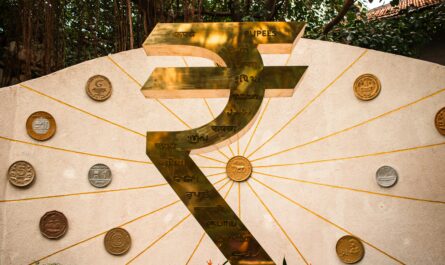The Loan Life Coverage Ratio (LLCR) is a critical financial metric used by lenders to assess the creditworthiness of borrowers, particularly in large-scale infrastructure and project financing. In India, understanding the LLCR is crucial for both borrowers and lenders to ensure the sustainability and profitability of long-term projects.
This blog provides a comprehensive guide to the Loan Life Coverage Ratio, explaining its significance, calculation, and implications.
But if you are just looking for an instant personal loan boost for your finances, then consider Airtel Finance. Get the best interest rates on your personal loan, low processing fees, and an easy application process, all through the Airtel Thanks app!
What is the Loan Life Coverage Ratio (LLCR)?
The Loan Life Coverage Ratio (LLCR) is a measure used to evaluate a borrower’s ability to repay a loan over the loan’s life. It is a forward-looking ratio that compares the present value of a project’s cash flows available for debt service (CFADS) to the total outstanding debt of the project. Essentially, it assesses whether the cash flows generated by a project will be sufficient to cover the debt repayments over the entire loan period.
Importance of LLCR in Project Financing
- Credit Assessment:
- LLCR is a vital tool for lenders to assess the credit risk associated with long-term projects. It provides insight into the financial health and sustainability of the project over its lifespan.
- Risk Management:
- By calculating the LLCR, lenders can identify potential risks and ensure that the project generates enough cash flow to meet debt obligations, thereby minimizing the risk of default.
- Investment Decisions:
- For investors and stakeholders, a healthy LLCR indicates a project’s viability and profitability, making it an attractive investment opportunity.
Read more: Impact of GST on personal loan
Calculation of LLCR
The LLCR is calculated using the following formula:
LLCR = Outstanding Debt / Present Value of CFADS
Where:
- CFADS: Cash Flows Available for Debt Service is the net cash flow generated by the project after operating expenses and taxes but before debt service payments.
- Present Value: The value of future cash flows discounted at the project’s cost of debt or the lender’s discount rate.
Steps to Calculate LLCR
- Estimate Future Cash Flows:
Forecast the project’s cash flows available for debt service over the loan period. This involves projecting revenues, operating costs, taxes, and changes in working capital.
- Determine the Discount Rate:
The discount rate is usually the cost of debt or the interest rate applicable to the loan. It reflects the time value of money and the risk associated with future cash flows.
- Calculate the Present Value of CFADS:
Discount the forecasted cash flows to their present value using the determined discount rate. This gives the current value of future cash flows that will be available to service the debt.
- Identify Outstanding Debt:
Determine the total amount of debt that remains unpaid over the loan period. This includes both the principal and any accrued interest.
- Compute LLCR:
Divide the present value of CFADS by the outstanding debt to obtain the LLCR.
Read more: Tips to get instant personal loan for self-employed
LLCR Benchmarks and Interpretation
- LLCR > 1: A ratio greater than 1 indicates that the project generates sufficient cash flows to cover the debt obligations, suggesting a lower risk of default.
- LLCR = 1: A ratio equal to 1 means the project’s cash flows are just enough to meet the debt repayments, implying a balanced but risk-prone situation.
- LLCR < 1: A ratio less than 1 signals that the project may not generate enough cash flows to cover its debt, indicating a higher risk of default.
LLCR in the Indian Context
In India, the LLCR is particularly significant in sectors like infrastructure, power, and real estate, where projects involve substantial capital investment and long gestation periods. Here’s how LLCR plays a role in these sectors:
- Infrastructure Projects:
Large-scale infrastructure projects such as highways, airports, and railways require substantial funding and have long payback periods. LLCR helps in assessing the project’s ability to generate cash flows over time to service the debt, ensuring financial viability.
- Power Sector:
Power generation and distribution projects involve high initial costs and long-term revenue streams. LLCR is crucial for lenders to evaluate the project’s capacity to cover debt repayments through generated revenue.
- Real Estate:
In the real estate sector, LLCR helps developers and lenders assess the financial feasibility of large housing and commercial projects. It ensures that projected sales and rental incomes are adequate to meet debt obligations.
Read more: Instant personal loan hacks you need to know
Factors Affecting LLCR
- Revenue Projections:
Accurate forecasting of revenue is essential, as overestimation can lead to a misleading LLCR. Factors such as market demand, pricing, and competition must be considered.
- Operating Costs:
Efficient management of operating costs directly impacts CFADS. Unexpected increases in costs can reduce cash flows available for debt service, affecting the LLCR.
- Interest Rates:
Fluctuations in interest rates can impact the discount rate used in LLCR calculations. Higher interest rates increase the cost of debt, reducing the present value of CFADS.
- Economic Conditions:
Macroeconomic factors such as inflation, exchange rates, and economic growth influence the project’s financial performance and cash flow generation.
The Loan Life Coverage Ratio (LLCR) is a pivotal metric in the realm of project financing in India. It provides a comprehensive view of a project’s ability to generate sufficient cash flows to cover its debt over the loan’s lifespan. As India continues to invest in infrastructure and development, LLCR will remain a crucial tool for evaluating and managing the financial health of major projects.
FAQs
-
What is Loan Life Coverage Ratio (LLCR)?
LLCR is a financial metric used by lenders to assess a project’s ability to generate enough cash flow to cover debt obligations throughout its life cycle.
-
How is Loan Life Coverage Ratio calculated?
LLCR is calculated as the present value of a project’s cash flows divided by the present value of debt service payments (principal and interest) over the loan term.
-
Why is LLCR important?
LLCR helps lenders evaluate the financial viability and risk associated with long-term projects or loans by ensuring adequate cash flow to meet debt obligations.
-
What is a good LLCR ratio?
A ratio above 1 indicates sufficient cash flow to cover debt payments. Lenders typically prefer LLCR ratios of 1.2 or higher to mitigate risks and ensure loan repayment.



